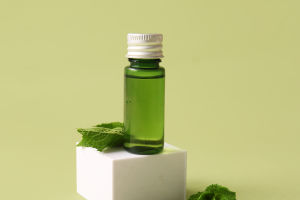Chew, Explore, Grow
In the process of a baby’s growth, baby chewers have become an essential tool for many parents.
As infants start teething, they become curious about the objects around them, especially various foods.
At this time, baby chewers not only help relieve the discomfort of teething but also provide a safe option for them to explore new flavors and textures. This article will provide a comprehensive introduction to baby chewers, helping parents better understand and choose the right one for their babies.
Types of Baby Chewers
1. Silicone Fruit Feeder: These chewers are made of food-grade silicone, which is soft and elastic, making them suitable for babies whose teeth are just starting to emerge. The silicone material is safe, non-toxic, and easy to clean, making it very appropriate for baby use.
2. Teething Toys: These chewers often come in various fun shapes that can attract the baby’s attention. Made of rubber, these toys not only help relieve teething discomfort but also assist in developing the baby’s chewing abilities.
Benefits of Using Baby Chewers
1. Relieves Teething Discomfort: Babies may experience discomfort in their gums while teething. Chewers can provide appropriate pressure to help alleviate this discomfort.
2. Promotes Oral Health: The chewing process can stimulate saliva production in the mouth, which helps clean the oral cavity and prevent cavities.
3. Develops Chewing Skills: By using a baby chewer, infants can practice chewing in a safe environment, which aids in transitioning to solid foods in the future.
4. Stimulates Sensory Exploration: The diverse shapes and textures of baby chewers can capture the baby’s attention, stimulating their tactile and taste exploration, which contributes to cognitive development.
How to Choose a Baby Chewer
When selecting a baby chewer, parents should pay attention to the following points:
1. Safety of Materials: Ensure that the chewer is made of food-grade, non-toxic materials, such as food-grade silicone or stainless steel.
2. Ease of Cleaning: Choose chewers that are easy to clean and disinfect to ensure the baby’s hygiene and safety.
3. Appropriate Design: The shape and size of the chewer should be suitable for the baby’s small hands, making it easy for them to explore on their own.
4. Consider Age: Different age groups of babies require different types of chewers. Ensure that you select products suitable for the baby’s current developmental stage.
Precautions
While using baby chewers, parents should also be mindful of the following points:
1. Supervised Use: Parents should accompany the baby during the use of the chewer to ensure they are exploring in a safe environment.
2. Regular Inspections: Regularly check the chewer for signs of wear, ensuring that it has no broken or detached parts to avoid accidental ingestion by the baby.
3. Moderate Use: Although baby chewers offer numerous benefits, parents should use them in moderation to prevent the baby from becoming overly reliant on them.
As an important tool in a baby’s growth process, baby chewers effectively help relieve teething discomfort, promote oral health, and stimulate sensory exploration.
Choosing the right chewer and using it correctly not only allows babies to safely and happily navigate through teething but also lays a solid foundation for their eating habits. Therefore, parents should fully understand the various types of baby chewers and make reasonable choices based on their baby’s actual needs. Let’s work together to support the healthy growth of our babies!


